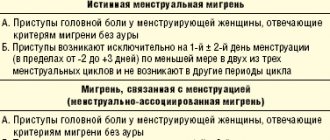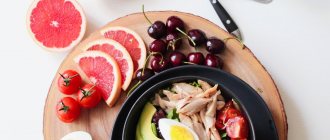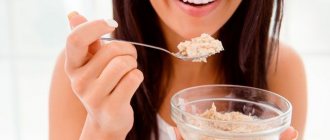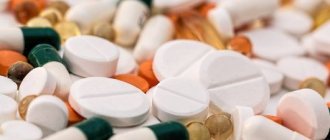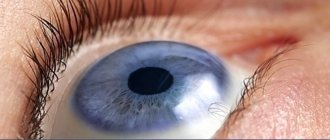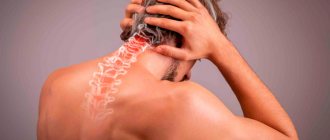Among the huge number of neurological diseases, the most common is migraine. Today, this pathology is a serious problem for all of humanity: about 10% of people on the globe suffer from it, and this figure is growing from year to year. Unfortunately, it is completely impossible to cure it. As with asthma or allergies, you can only relieve and control symptoms and minimize attacks. This is achieved by taking medications, as well as following a certain diet. What foods trigger migraines? How to make a diet correctly?
You need to know this
One of the main causes of
migraines is metabolic disorders
.
Indicative in this regard is an imbalance of serotonin and histamine, which regulate the functioning of the nervous and immune systems. In people suffering from the disease, there is very little serotonin, which constricts blood vessels, but there is quite a lot of histamine, which, on the contrary, dilates them. And this imbalance leads to serious headaches, loss of visual fields and other symptoms. Contrary to popular belief, migraine is not only a disease of women, although, indeed, it occurs more often among the fair sex. Symptoms can first appear at any age, but are more common in teenagers. The risk factor is heredity.
What is migraine?
A migraine attack is a painful condition that includes a whole range of symptoms. The most characteristic of them is an intense throbbing headache, mainly on one side of the head. It is accompanied by nausea, vomiting, intolerance to light, sounds, and sometimes touches [1,2].
The occurrence of an attack involves complex mechanisms of a neurological, neurochemical and vascular nature. There are several types of migraine:
- Simple, without aura. Characterized by an attack of headache without additional symptoms.
- With an aura. It occurs in approximately 20% of cases, and is characterized by the appearance before an attack (less often at the peak of pain) of visual hallucinations and disturbances in the sensitivity of the body [2,3].
- Vestibular. In addition to headaches, a person experiences severe dizziness (vertigo), tinnitus, and hearing loss. Occurs in 10% of cases [4].
Attacks can last from several hours to two days. They can be episodic - several times a year, or can occur several times a month, practically disabling a person.
The likelihood of an attack is influenced by many factors - emotional and physical stress, the monthly cycle in women, the nature of nutrition.
There are certain foods that trigger migraines. There is nothing strange about this if you know how an attack develops.
Migraine and food
The concentration of serotonin and histamine depends on many factors, including nutrition. Some foods contain tyramine, nitrate additives, MSG, and more. Some of them relax blood vessels, others constrict. This triggers the mechanism for the development of pain. Based on this, when drawing up a treatment plan, doctors do not limit themselves to just taking medications, but also prescribe a specific diet. By eliminating migraine-causing foods from your diet, you can reduce the number of attacks and even the severity of pain. By strictly following all the doctor’s recommendations, it is possible to completely get rid of the disease.
Products for migraines
To control symptoms and prevent attacks, you should include the following foods in your diet:
- carbonated drinks, but without caffeine;
- raw chicken and quail eggs, or poached eggs;
- different types of meat and fish, which should be cooked exclusively by steaming. At the same time, it is advisable to eat it immediately after cooking, which will help you receive all the necessary nutrients
; - dairy products, including processed cheeses, but the milk should have a low fat content - no more than 2%;
- You should diversify your diet with cereals, from which you can make porridge;
- flour products, including pasta;
- vegetables and fruits that should be served fresh, boiled or steamed; • spices that will help give dishes a new taste;
- homemade broths and soups;
- natural and freshly squeezed juices;
- honey and other sweets;
- foods that contain large amounts of magnesium.
Nutrition rules
Nutrition is a factor that can help get rid of numerous diseases. This is also a factor that can lead to complications, the development of severe symptoms and exacerbation of diseases. Doctors recommend including natural foods in the diet, and the consumption of harmful ones should be limited and minimized. Following these simple rules will help relieve painful symptoms. There is another “side” effect - strengthening the immune system. It has long been known that errors in nutrition are provoking mechanisms. Hunger or large gaps between meals are provocateurs of severe headaches and other symptoms. Therefore, people suffering from symptoms are advised not to skip meals and always have access to snacks.
It is important to observe the drinking regime. You need to drink water regularly throughout the day, following general recommendations - at least 1.5-2 liters, depending on the time of year.
Trigger foods for migraines
In addition to healthy foods that need to be included in the diet, there are also those that should definitely be excluded or at least minimize their consumption. The list
of products that need to be limited includes the following:
- fermented milk products: fatty cheeses, sour cream. It is necessary to limit the amount of yoghurt and kefir;
- products made from yeast dough;
- some fruits: bananas, citrus fruits, dates and avocados;
- ice cream.
But there are also those foods that need to be completely excluded from the diet.
The fact is that during an attack they only increase the severity of pain, and outside of attacks they can provoke their appearance. First of all, you need to limit the consumption of drinks with a high content of caffeine and alcohol, even if we are talking about low-alcohol drinks. Sausages and semi-finished products cannot be called healthy, and they are completely contraindicated for people suffering from such serious headaches. Canned food, marinades and pickles should not appear on the table. Dishes and foods high in food additives, soy and walnuts can also cause headaches. You should not overuse fried and baked meat products. An active lifestyle, giving up bad habits, playing sports, walking, preventing stress are measures that will help prevent attacks.
Drug therapy and following a diet are measures that can reduce the severity of pain, reduce the likelihood of attacks, and, possibly, give a chance to forget about what a migraine is.
Text: Yulia Lapushkina.
How are diet and seizures related?
The causes of this disease have not been fully revealed, but science knows a lot about the mechanisms of migraine headaches. There is a theory linking the development of an attack with a disorder of serotonin metabolism [5].
Serotonin is a substance that helps conduct nerve impulses (neurotransmitter) and is also a tissue hormone. It promotes the contraction of smooth muscles, which means vasoconstriction. Calms the nervous system, increases the threshold of pain sensitivity, controls negative emotions.
It is believed that in the first phase of a migraine attack there is a release of serotonin, histamine, and norepinephrine. These substances cause a sharp narrowing of the blood vessels in the brain, increase their permeability, and provoke inflammation.
Serotonin then begins to be eliminated from the body. Its amount in the blood and central nervous system decreases. The blood vessels dilate and stretch, and pain receptors are irritated. Due to a lack of serotonin, the pain threshold decreases, and a person begins to experience an intense throbbing headache [5].
A number of foods affect serotonin levels and metabolism. For example, cheese, cocoa, alcohol, citrus fruits, smoked meats and others [6].
Moreover, a significant part of them are allergens. This confirms another theory of migraine, which states that this disease is of an allergic nature [1,7].
There is evidence of a connection between celiac disease (gluten intolerance) and migraines. With celiac disease, gluten, which is found in wheat, rye, and barley cereals, causes inflammation of the walls of the small intestine, and then cell atrophy. Since 95% of serotonin is located in the mucous membrane of the gastrointestinal tract, these processes lead to disruption of serotonin metabolism [6].
Recommendations
Researchers studying the relationship between foods and migraine attacks have found that some dietary nutrients have beneficial effects on sufferers. Coffee, for example, helps many people cope with the first attacks of migraine, and food rich in magnesium, calcium, vitamins A, fiber is considered medicinal.
Belgian researchers concluded that vitamin B2 can relieve headaches. For this reason, it is useful to eat sardines, lentils, mushrooms, and salmon dishes. Vitamin B6 promotes the production of serotonin, which means it may also reduce the risk of migraines. This substance is found in asparagus, baked potatoes, sunflower seeds, bran or whole grain bread. Another important element is magnesium. During times of stress, its reserves in the body decrease sharply, and this, again, is fraught with severe headaches. To increase your magnesium content, it is useful to eat brown rice, chestnuts and nuts.
If we talk about fatty foods, then not all fat-containing foods are prohibited for migraines. Foods containing omega-3 acids (cod, salmon and other sea fish), on the contrary, help prevent attacks. It is believed that these fatty acids improve the condition of nerve cell membranes, making them more resistant to migraine-causing factors.
As for vegetable fats, the most useful for headaches are unrefined flaxseed, olive and soybean oils. By the way, flaxseed oil, in addition to beneficial fatty acids, contains hormone-like substances prostaglandins, which return dilated and inflamed brain vessels (which, in fact, cause attacks of pain) to normal.
Speaking about healthy products, special mention should be made of ginger. This spice is known as a natural remedy for migraines. The fact is that the root contains large quantities of analgesic substances. During an attack, it is recommended to consume 0.5-1 tsp. chopped ginger.
Another important component of the diet is water. It has been scientifically proven that even slight dehydration of the body triggers processes in the brain that provoke migraine attacks. The optimal amount of fluid consumed is at least 1.5 liters per day.
But let's get back to coffee. It has a controversial reputation in the diet of migraine sufferers. On the one hand, caffeine-containing drugs are among the anti-migraine drugs used by official medicine, and coffee helps many people pacify pain. But at the same time, for some patients (usually those who abuse strong coffee), the drink is a migraine trigger. It is also worth mentioning separately about alcohol. Red wine and beer are strictly prohibited for all patients, but cognac (in small quantities) sometimes helps alleviate the condition (due to its vasoconstrictor effect).
Foods that are good for migraines:
- rice (especially brown), oatmeal, buckwheat;
- poultry, sea fish;
- bread with bran, from wholemeal flour;
- feta cheese, cream cheese, sweet cottage cheese, low-fat milk;
- pear, cherry, cranberry;
- broccoli, spinach, chard, cauliflower, cucumbers, sweet potatoes, carrots, zucchini, beets, pumpkin, turnips;
- dried fruits, walnuts;
- vegetable oils (corn, olive, flaxseed, soybean).
Taking into account the above nutritional recommendations, nutritionists have drawn up a one-day nutrition plan, following which you can alleviate the condition at the onset of an attack. Even if it is not possible to eat according to such a program every day during an attack, then on the first day this diet can be very useful.
Helps with headaches
First, drink water and eat foods containing calcium, potassium and magnesium. All these three elements are involved in complex chemical reactions and are needed for the high-quality absorption of each of them.
It is also recommended to pay attention to foods rich in vitamin B2 and other B vitamins. They improve metabolism in the brain, in particular, help the synthesis of nerve cells. Vitamin B2 is found in dairy products, meat, and fish.
It is also a good idea to include watermelon, cauliflower, broccoli, eggs and fatty fish in your diet. Also pay attention to grapes, strawberries and greens. Tea with a small amount of ginger also helps with headaches.
Nutrition for migraines: recommended foods
- Vegetable oils (olive, corn, flaxseed, sunflower and others);
- decaffeinated coffee, weak loose leaf tea, fruit juices, compotes, unsweetened fruit drinks;
- fresh lean meat, fish (especially sea fish), poultry without skin;
- low-fat milk, processed cheese, cream cheese, feta cheese;
- local fruits, boiled and stewed vegetables.
Many protein products, even with short-term storage, can accumulate large amounts of tyramine, one of the factors in the development of a migraine attack. Therefore, it is advisable for migraine sufferers to eat only fresh meat, fish, and dairy products.
Expert: Galina Filippova, Candidate of Medical Sciences, general practitioner Author: Natalya Dolgopolova, general practitioner
The material uses photographs belonging to shutterstock.com
Calcium deficiency
Calcium is needed for more than just strong bones and teeth. It also plays a big role in ensuring muscle contractions. Thanks to a sufficient amount of calcium, even those muscles that we cannot control, such as the heart, work. Calcium is also important for the normal functioning of blood vessels.
If there is not enough calcium, the body can signal a problem with a headache. Usually this is not localized pain in the temples or the back of the head, but pain throughout the entire head, aggravated by any movement.
Products containing calcium : sesame, dairy products, almonds, garlic, parsley, hazelnuts, soy.
“According to statistics, 90% of people are familiar with headaches and have experienced them at least once. But no one thought that the most common food for us could cause headaches. There is a list of foods that often cause headaches after consuming them, for example, alcohol (we also include beer here), pickled and smoked foods, coffee, chocolate and cheeses, warns Anna Ivashkevich, nutritionist, clinical psychologist-dietitian, member of the Union of National Associations clinical nutrition . “But, in addition to the foods themselves, our eating habits can also provoke pain: irregular meals and even improper drinking regime. A migraine or headache may not occur immediately, but only several hours or days after consuming a particular product.”
Complications of hemicrania
- One of the common complications is drug abuse, which occurs when trying to relieve a migraine attack. Excessive intake of painkillers (of different groups) itself provokes headaches. This kind of vicious circle inevitably leads to a chronic form of migraine.
- Loss of performance and decreased quality of life during cephalalgia attacks.
Drug therapy
A diet can significantly alleviate a person’s condition, but, as a rule, it is impossible to do without medications. To diagnose migraine and select therapy, you need to make an appointment with a neurologist. Systemic drugs are prescribed that affect the mechanism of attack development and reduce its intensity.
Analgesics and non-steroidal anti-inflammatory drugs (NSAIDs), such as ibuprofen, paracetamol, naproxen and others, are used for pain relief [7].
For severe dizziness, medications based on betahistine are prescribed. These drugs relieve symptoms of vertigo (vestibular dizziness), nausea, and tinnitus characteristic of vestibular disorders.
The most effective is complex treatment that combines medications, diet, psychotherapy, gymnastics, and a “biofeedback” (BF) training system.
How does hemicrania occur?
The mechanism of hemicrania is described as a wave of electrical excitability (scientists call it extended cortical depression), provoked by neurons that conduct pain impulses from certain structures of the head.
As a result, narrowing occurs, and then dilation and inflammation of the vessels of the meninges, which causes the release of inflammatory mediators. They, in turn, irritate the endings of the trigeminal nerve, which gives rise to headaches. The brain itself cannot hurt, since it is devoid of pain receptors.
